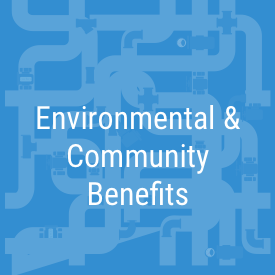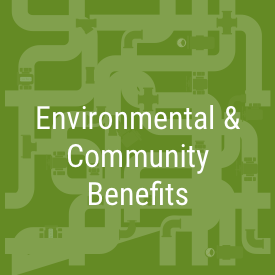Valley Water is proposing the Canal Maintenance Program to provide a coordinated, consistent, and efficient approach to preventative, routine, and corrective maintenance of approximately 25 miles of operable and inoperable canals. Timely completion of canal maintenance is critical to protecting public safety, reducing maintenance costs, reducing the risk of inadvertent damage to private and public property associated with deferred maintenance, and minimizing and reducing impacts to sensitive species, their habitats, and the environment.
Canal Maintenance activities include, but are not limited to: vegetation management; sediment removal; erosion control and bank stabilization; minor repairs to the canal lining and walls; culvert repairs and replacement; access road maintenance; management of animal burrows; and other minor maintenance activities.
Implementation of the Canal Maintenance Program would not change future canal operations or uses.








January 10, 2024 – Canal Maintenance Program Notice of Preparation and Scoping Meeting
The environmental review for the Canal Maintenance Program has begun! In accordance with the California Environmental Quality Act (CEQA) and the State CEQA Guidelines, the Santa Clara Valley Water District (Valley Water)—the CEQA Lead Agency—has prepared a Notice of Preparation (NOP) of an Environmental Impact Report (EIR) in connection with Valley Water’s proposed Canal Maintenance Program. The NOP provides a brief description of the project, including the canals and canal maintenance activities, and the potential environmental effects of the project. The NOP is available for public review and can be accessed online: https://www.valleywater.org/public-review-documents.
The NOP initiates the CEQA process and EIR scoping period through which Valley Water will refine the scope of issues and environmental information that should be included in the Draft EIR. The Draft EIR will evaluate the possible environmental impacts of the project and identify mitigation measures and project alternatives that avoid, minimize, or reduce the project’s adverse environmental effects.
Valley Water is seeking input from public agencies, members of the public, and other interested parties on the scope of issues and content of the environmental information that should be included in the Draft EIR.
To view a recording of the Jan. 25, 2024 Scoping Meeting click here
To view the Canal Maintenance Program Notice of Preparation click here
To view the canal locations click here
To view the presentation click here
Once approved, the Canal Maintenance Program will:
- Protect public safety and private property from potential hazards such as localized flooding, erosion, and bank instability along 25 miles of canals.
- Maintain the structural and functional integrity of operable canals that are used to provide a reliable water supply source for the region.
- Avoid or minimize impacts to the environment, sensitive species, and habitat related to canal maintenance.
Valley Water’s canals were built in the 1930s and 1950s to transfer water supplies to surface storage reservoirs and groundwater recharge facilities throughout Santa Clara County. Although a handful of the canals are still in operation and remain a critical part of Valley Water’s water distribution system, most haven’t been used to transport water supplies for decades and are inoperable. Regardless of status, all of Valley Water’s canals collect and convey incidental stormwater runoff, provide some flood protection benefits for nearby developments, and require maintenance. The timely completion of maintenance is essential to maintaining the functionality and reliability of operable canals, reducing the risk of localized flooding and damage to private and public property resulting from deferred maintenance, and protecting public safety.




